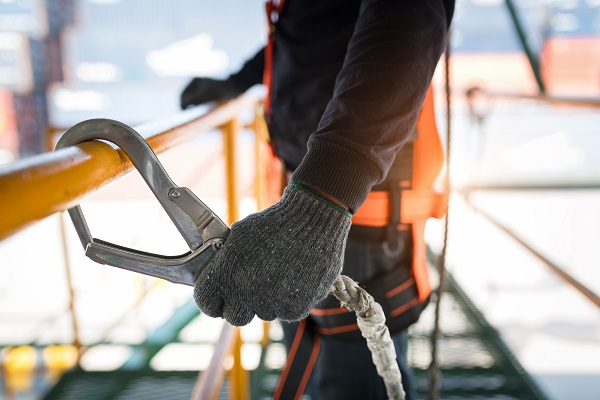Drug and Alcohol Testing | Maximise Safety in the Workplace
Red Letter Consulting Services can help you to develop a Workplace Policy and Drug and Alcohol Testing program to suit the needs of your business.
A random drug and alcohol program aims to ensure compliance with workplace Drug and Alcohol policies, contractual compliance, and the continued health and safety of all workers and anyone affected by organisational works.
Benefits of Workplace Drug and Alcohol Testing Program:
- Workplace Safety and Productivity
- Employee Wellbeing
- Improved Workplace Culture regarding Drug and Alcohol Use
- Reduced Absenteeism
Recommendations for Frequency of Drug and Alcohol Testing in the Workplace
It is recommended that a random testing program be undertaken on a monthly basis, testing approximately 10% of the workforce per visit.
Red Letter Consulting Services conducts drug testing, which involves the use of an oral fluid drug test to detect cannabis, amphetamine/methamphetamine, cocaine, opiates, and benzodiazepines as per Australian Standard (AS 4760-2019) for the collection of oral fluids, in conjunction with a breath analysis test for alcohol meeting the requirements of Australian Standard (AS 3547-2019).
Non-negative tests will be referred to a NATA accredited laboratory for confirmation.
Drug and Alcohol Testing can be performed onsite or at the offices of Red Letter Consulting in Bairnsdale.
Benefits of Random Drug and Alcohol Testing
By instigating onsite random drug and alcohol testing and pre-employment testing, organisations can proactively enforce a drug and alcohol-free environment.
Drug and alcohol testing can also be instigated after an incident or accident to rule out causal effects and prior to returning to work after a non-negative result due to previous illicit drug or alcohol use.
The use of illicit drugs and alcohol consumption is widespread in Australian communities and has a significant economic, health, and social cost. The Australian Institute of Health and Welfare Report (2022) estimated that the total workplace costs of alcohol use alone was $4.0 billion in the period of 2017-2018, with the costs of drug usage also significant.
Absenteeism, work incapacity, low productivity, and work accidents are all associated with drug and alcohol use.
The potential dangers of substance abuse are well documented. It is considered that while alcohol and drug use is widespread in Australia, your workers tend to have an elevated prevalence of usage, with construction and “male-dominated industries” being more susceptible to the risky consumption of alcohol.
Research has found that more than 40% of construction and building apprentices engage in risky drinking behaviour, 20% of workers report consumption of alcohol during working hours and 19% of construction workers suffer from issues relating to alcohol consumption while attending work and suffering from a hangover is reportedly a common occurrence.
Legal Requirements of Workplace Drug and Alcohol Testing
The Occupational Health and Safety Act 2004 aims “to secure the health, safety, and welfare of employees and other persons of work, to eliminate risks to the health, safety or welfare of employees and other persons of work; and to ensure that the health and safety of members of the public is not placed at risk by the conduct or undertakings by employers.”
Employers are open to significant liability if found to be in breach of health and safety legislation.
The World Health Organisation (WHO) encourages businesses to adopt prevention measures that are designed to stop the consumption of drugs and alcohol.
Intervention can include providing information, undertaking workplace drug and alcohol programs, and can include workplace policies and supervisor training.
There is justification for workplace drug testing services when workplace safety, productivity, and the integrity of workers is concerned.
Studies have found that there is an association between random drug testing and a decrease in workplace injuries and lower “post-test accident rates” where random drug testing programs have been undertaken.
Significant association had been observed between prevention programs and a decrease in occupational accidents, with evidence pointing to a reduction in alcohol and drug usage detected over time with the continued application of testing programs.
Any disciplinary action is to be at the discretion of management and in line with the current workplace drug and alcohol policy.

Privacy Requirements of Drug and Alcohol Screening
Breach of privacy is a chief concern of workplace drug and alcohol testing due to the collection of samples, and personal information, and intrusion into the worker’s personal life. A strict chain of custody procedure will be adhered to throughout the program to ensure the privacy of all workers concerned.
Visit Safe Work Australia for more information on your duties regarding drugs and alcohol in the workplace:
Red Letter Consulting offers Workplace Drug and Alcohol Testing Services in the Gippsland Region.
References
Akanbi, M.O., Iroz, C.B., O’Dwyer, L.C., Rivera, A.S., & McHugh, M.C. (2020). A systematic review of the effectiveness of employer-led interventions for drug misuse. https://www.proquest.com/docview/2472959298?accountid=10382&pq-origsite=primo&forcedol=true
Allen, J.G., Prichard, J. & Griggs, L. (2013). A workplace drug testing act for Australia. https://www.proquest.com/docview/1566202073/fulltextPDF/FAE731AE08684849PQ/1?accountid=10382
Australian Institute of Health and Welfare. (2022). Alcohol, tobacco & other drugs in Australia. https://www.aihw.gov.au/reports/alcohol/alcohol-tobacco-other-drugs-australia/contents/impacts/economic-impacts
Gomez-Recasens, M., Alfaro-Barrio, S., Llaurado, E. & Sola, R. (2018). A workplace intervention to reduce alcohol and drug consumption: a nonrandomized single-group study. https://www.proquest.com/docview/2158584083?accountid=10382&pq-origsite=primo&forcedol=true
Holland, P. (2016). Drug testing in the Australian workplace: still a contested terrain. https://journals.sagepub.com/doi/full/10.1177/0022185616648031
Marques, H.P., Jesus, V., Olea, S.A., Vairinhos, V. & Jacinto, C. (2014). The effect of alcohol and drug testing at the workplace on individual’s occupational accident risk. https://www.sciencedirect.com/science/article/pii/S0925753514000769
Pidd, K., Kostadinov, V. & Roche, A. (2016). Do workplace policies work? An examination of the relationship between alcohol and other drug policies and workers’ substance use. https://www.sciencedirect.com/science/article/pii/S0955395915002534
Roche, A., Chapman, J., Duraisingam, V., Phillips, B., Finnane, J. & Pidd, K. (2020). Construction workers’ alcohol use, knowledge, perceptions of risk and workplace norms. https://onlinelibrary.wiley.com/doi/full/10.1111/dar.13075
The Occupational Health and Safety Act (2004). https://content.legislation.vic.gov.au/sites/default/files/2021-09/04-107aa037%20authorised.pdf
Standards Australia (2019). Breath alcohol testing devices for personal use (AS 3547-2019). Sydney, NSW: Standards Australia.
Standards Australia (2019). Procedure for specimen collection and the detection and quantitation of drugs in oral fluid (AS 4760-2019). Sydney, NSW: Standards Australia.
